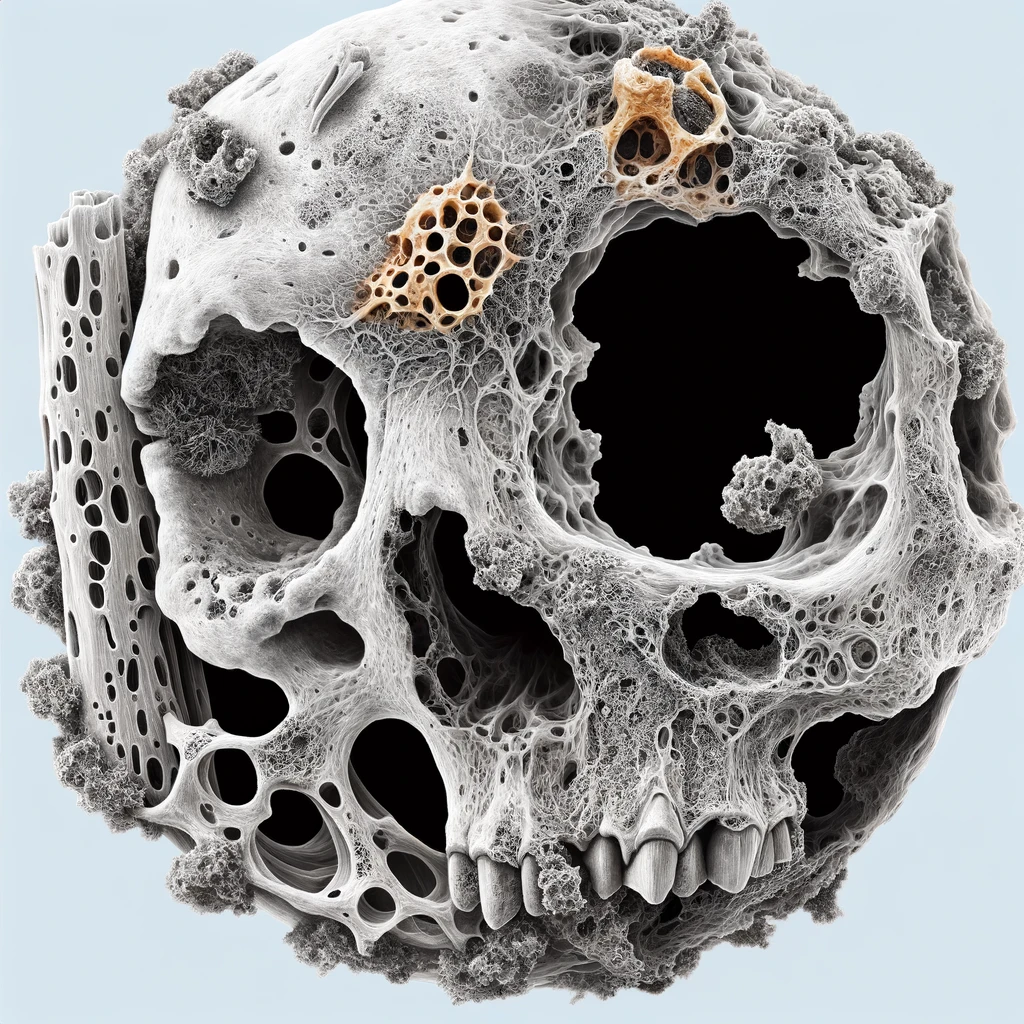Paget’s Disease of the Bone

Paget's disease of the bone, also known as osteitis deformans, is a chronic disorder that affects the skeletal system. It is characterized by abnormal bone growth and remodeling, leading to weakened and distorted bones.
Paget Disease: Osmosis Study Video
What is Paget’s Disease of the Bone?
What Causes Paget’s Disease of the Bone?
What are the Symptoms of Paget’s Disease of the Bone?
How is Paget’s Disease of the Bone Diagnosed?
How is Paget’s Disease of the Bone Treated?
Can Paget’s Disease of the Bone Lead to Complications?
Is Paget’s Disease of the Bone Common?
This disease commonly affects older individuals, particularly those over the age of 50. It can involve one or multiple bones in the body, but most commonly affects the pelvis, spine, skull, and long bones of the legs.
People with Paget's disease may experience bone pain, fractures, deformities, and an increased susceptibility to other bone-related conditions such as osteoarthritis or osteoporosis. In some cases, it may also lead to complications such as hearing loss, nerve compression, and cardiovascular problems.
The exact cause of Paget's disease is unknown, but it is believed to involve a combination of genetic and environmental factors. It may also be associated with viral infections, though this is yet to be conclusively proven.
Treatment for Paget's disease typically involves a combination of medications to regulate bone turnover, manage pain, and prevent complications. Physical therapy and assistive devices may be recommended to improve mobility and prevent falls. In severe cases, surgery may be necessary to correct deformities or fractures.
Beneficial Insights
All of these drugs are prescription medications used for various medical conditions. Zovirax is an antiviral used for treating herpes infections, daklinza is an antiviral used for treating hepatitis C, addyi is a medication for hypoactive sexual desire disorder in women, xyzal is an antihistamine used for allergies, amoxil is an antibiotic used for various infections, propecia is used for treating male pattern baldness, clomid is a fertility medication for women, and priligy is used for treating premature ejaculation. These medications serve different purposes and cater to various health conditions.
Regular monitoring and follow-up with healthcare professionals are important for managing and controlling the progression of Paget's disease. Early diagnosis and intervention can help minimize complications and improve overall quality of life for individuals affected by this condition.
Paget's Disease of the Bone
- Gradual bone pain
- Joint pain and stiffness
- Frequent fractures
- Enlarged or misshapen bones
- Headaches and hearing loss (in case of skull involvement)
- Numbness, tingling, or weakness (in case of nerve compression)
- Bowing of the long bones
- Reduced mobility and range of motion
- Increased risk of bone deformities
- Difficulty in walking
Paget's Disease of the Bone
Causes
- Genetic factors – certain mutations in genes, such as the SQSTM1 gene, have been associated with an increased risk of developing Paget's disease of the bone.
- Viral infection – some studies suggest that a viral infection, particularly by the measles virus, may play a role in the development of this disease.
- Environmental factors – exposure to certain environmental factors, such as certain viruses or toxins, may contribute to the development of Paget's disease.
- Abnormal bone remodeling – the exact cause of abnormal bone remodeling that leads to Paget's disease is not fully understood, but it is believed to involve a combination of genetic, environmental, and cellular factors.
Medical History
During the diagnosis process, the healthcare provider will review the patient's medical history to identify any risk factors or previous medical conditions that may contribute to Paget's Disease of the Bone.
Physical Examination
A physical examination will be conducted to check for signs of Paget's Disease of the Bone, such as bone deformities or abnormalities in affected areas of the body. The healthcare provider may also assess the patient's range of motion and look for signs of pain or discomfort.
Laboratory Tests
Various laboratory tests can aid in the diagnosis of Paget's Disease of the Bone:
- Blood tests: Elevated levels of specific markers, such as serum alkaline phosphatase and urinary hydroxyproline, may indicate increased bone turnover associated with Paget's Disease.
- Imaging tests: X-rays, bone scans, or CT scans can reveal abnormalities in bone structure, increased bone density, or areas of bone resorption.
- Genetic testing: In some cases, genetic testing may be performed to detect mutations associated with Paget's Disease.
Biopsy
In certain situations, a biopsy may be necessary to confirm the diagnosis. This involves removing a small sample of affected bone tissue for analysis under a microscope to determine if Paget's Disease is present.
Conclusion
Diagnosing Paget's Disease of the Bone typically involves a combination of medical history review, physical examination, laboratory tests, and sometimes a biopsy. It is essential to consult a healthcare professional for an accurate diagnosis and appropriate treatment.
Please login or register to post a comment